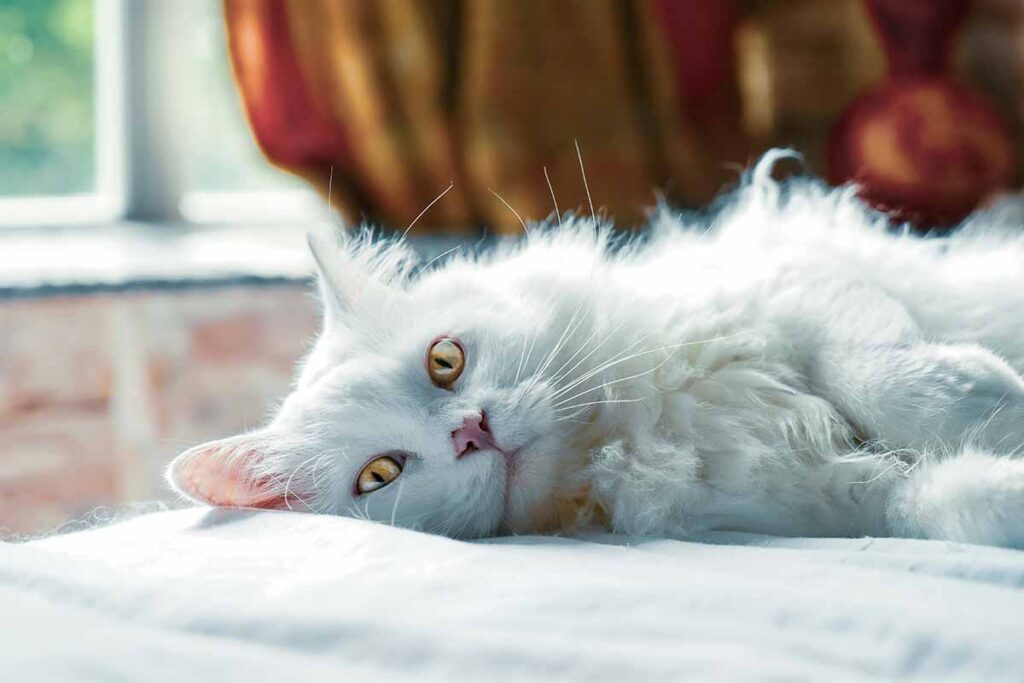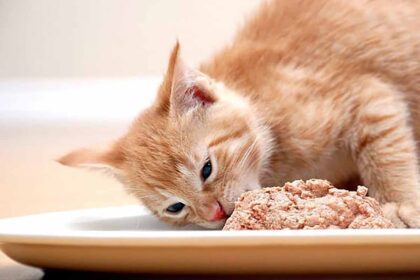Hey, fellow cat enthusiasts! If you’re like me, your furry feline companion is more than just a pet; they’re family. And like any family member, we want to keep them healthy and happy for as long as possible. One health concern that’s been on the radar for cat lovers is Feline Infectious Peritonitis, or FIP for short. Feline infectious peritonitis (FIP), a disease caused by a mutated form of the common feline coronavirus (FCoV), can strike fear in the hearts of any cat owner.
While the exact mechanisms remain enigmatic, its potential lethality demands a proactive approach. But fear not! With a bit of knowledge and care, we can take proactive steps to safeguard our beloved cats from this devastating disease.
Before We Dive In: The Sobering Stats
- Up to 80% of cats harbor the FCoV at some point in their lives, with most remaining asymptomatic carriers.
- Only a small percentage (less than 10%) develop FIP, highlighting the crucial role of a mutated virus and other contributing factors.
- Diagnosis remains challenging, often leading to delayed intervention and poorer outcomes.
But FIP isn’t just about a hidden virus. Genetics, like a pre-existing vulnerability in some breeds, can play a role. The gut microbiome, teeming with tiny bacterial heroes and villains, also influences the battle against FIP. And don’t forget the stress monster – chronic stress weakens your cat’s defenses, making them more susceptible, just like facing a foe when hangry and sleep-deprived.
Diagnosis of FIP in cats
It is challenging to diagnose FIP. Numerous symptoms may also indicate other conditions, and there isn’t a single blood test that can identify FIP. Your cat’s veterinarian is more likely to suspect FIP if:
- Has a low count of white blood cells
- Has an exceptionally high quantity of white blood cells
- Has high protein quantities in the blood.
- Yellowing of the gums or eyes.
- Is in a higher risk category (young cats, cats living in an overcrowded environment)
If there is a buildup of fluid in your cat’s belly or chest, your veterinarian may obtain a sample to test. Fluid with a high protein content indicates FIP and is typically yellow-tinged. If FIP is suspected, your veterinarian may do an x-ray or ultrasound on your cat.
There are a few more tests that might help confirm a FIP diagnosis. The immunoperoxidase test detects virus-infected white blood cells. Polymerase chain reaction technique can be used to detect viruses in tissues or bodily fluids. A biopsy of the affected tissue inside the abdominal cavity may be conducted.
Although these tests can help a veterinarian make a diagnosis, none of them are completely accurate.
Symptoms of FIP in cats?
Early symptoms of FIP can vary, but they frequently include a rising and dropping fever, lack of appetite, and energy loss. Infected cats may develop more FIP symptoms over time, depending on the type of FIP they have.
FIP comes in a “dry” and a “wet” form. Cats that are infected may only exhibit one type of symptom or both.
- Dry form: Cats with the dry form of FIP develop inflammatory sores and infections around their blood vessels. The skin, lungs, liver, kidneys, and brain can all be impacted by this infection. The cat will frequently have convulsions and move erratically or uncoordinatedly when in this shape. Cats may occasionally also experience vomiting, weight loss, jaundice, and increased thirst and urination.
- Wet form: This type of the illness results in an accumulation of fluid in the abdomen, giving the appearance of a potbelly. The cat may also have trouble breathing due to fluid accumulation in the chest. This type of FIP damages blood vessels, which leads to inflammation and blood seeping into the chest and belly.
When a cat gets FIP, in any form, the symptoms usually worsen with time. It is frequently required to put a cat “to sleep” (euthanasia) in a matter of weeks or months.
Is There a Vaccine for Cat FIP?
The American Association of Feline Practitioners Feline Vaccine Advisory Panel does not endorse the FIP vaccine, despite the fact that it is now available. Its effectiveness has not been demonstrated. Even while the vaccine might not be harmful, there are still dangers to consider. Speak with your veterinarian before beginning any new vaccination regimen or course of therapy.
Prevention Strategies
It is currently not feasible to prevent FIP due to the high prevalence of feline coronavirus in cats and the lack of knowledge surrounding FIP. The American Association of Feline Practitioners does not advise the FIP vaccine, despite the fact that it is available. By the time cats are old enough (16 weeks of age) to receive the vaccination, the majority of them will have already been exposed to feline coronavirus, decreasing the effectiveness of the shot.
The following is a list of several preventative techniques to reduce exposure to feline coronavirus, but keep in mind that these won’t stop FIP outright:
- Vaccination: Vaccination remains the cornerstone of FIP prevention. While no vaccine provides 100% protection against FIP, vaccines can help reduce the severity of the disease and lower the risk of transmission among cats. Consult with your veterinarian to determine the appropriate vaccination protocol for your feline companions.
- Minimize Stress: Stress can weaken a cat’s immune system, making them more susceptible to FIP and other diseases. Create a low-stress environment for your cats by providing adequate hiding spots, vertical space, and opportunities for mental stimulation. Minimize changes in routine and avoid overcrowding in multi-cat households.
- Hygiene and Sanitation: Maintaining a clean and hygienic environment is essential for preventing the spread of FIP and other infectious diseases. Keep bedding, food and water bowls, and litter boxes clean on a regular basis. Use pet-safe disinfectants to sanitize surfaces, especially in multi-cat households or cattery environments.
- Quarantine and Testing: If introducing a new cat into your home or cattery, consider implementing a quarantine period to monitor for signs of illness before allowing direct contact with resident cats. Additionally, testing for FCoV antibodies can help identify cats that may be at higher risk of developing FIP.
- Nutritional Support: A balanced diet plays a vital role in supporting your cat’s immune system and overall health. Choose high-quality cat food formulated to meet their nutritional needs. Consider supplements or specialized diets recommended by your veterinarian to support immune function and reduce inflammation.
To avoid FIP, keep your cat indoors and away from cats that have tested positive for feline coronavirus antibodies. In multi-cat households, keep food/water dishes and litter boxes carefully clean using bleach and other disinfectants.
Remember, Early Detection is Vital: While prevention is paramount, awareness of early signs is crucial. Be vigilant for weight loss, fever, lethargy, appetite changes, and respiratory issues. Prompt veterinary intervention can make a significant difference in managing the disease. Early detection allows for supportive care and exploration of potential treatment options, including those in clinical trials, that may offer hope for the future.
Conclusion
FIP might seem daunting, but knowledge is power. By understanding the complexities of the disease, implementing preventative measures, and staying informed about advancements, you transform fear into proactive love. Remember, every effort you make, every step you take to safeguard your feline friend, contributes to a brighter future where FIP no longer casts its shadow.
For more valuable information on pet care and health, be sure to check out PetsCityHub.Together, we can create a world where every cat thrives, unburdened by the fear of this insidious disease.
Let’s keep our cats happy, healthy, and purring for years to come!
FAQs
Q. Can FIP be cured?
A. Unfortunately, there is currently no cure for FIP. Treatment focuses on supportive care to manage symptoms and improve your cat’s quality of life.
Q. Is FIP contagious to other cats?
A. FIP is caused by a coronavirus that can be shed in feces and saliva. While most cats are exposed to the virus at some point in their lives, not all develop FIP. However, cats with FIP are not directly contagious to other cats.
Q. Can indoor cats get FIP?
A. Yes, indoor cats can still be at risk of developing FIP, especially if they are exposed to other cats that may carry the virus.
Q. Are kittens more susceptible to FIP?
A. Yes, kittens and young cats are more susceptible to developing FIP due to their immature immune systems.
Q. Is there a genetic predisposition to FIP?
A. While genetics may play a role in an individual cat’s susceptibility to FIP, the disease is primarily influenced by environmental factors and viral exposure.













